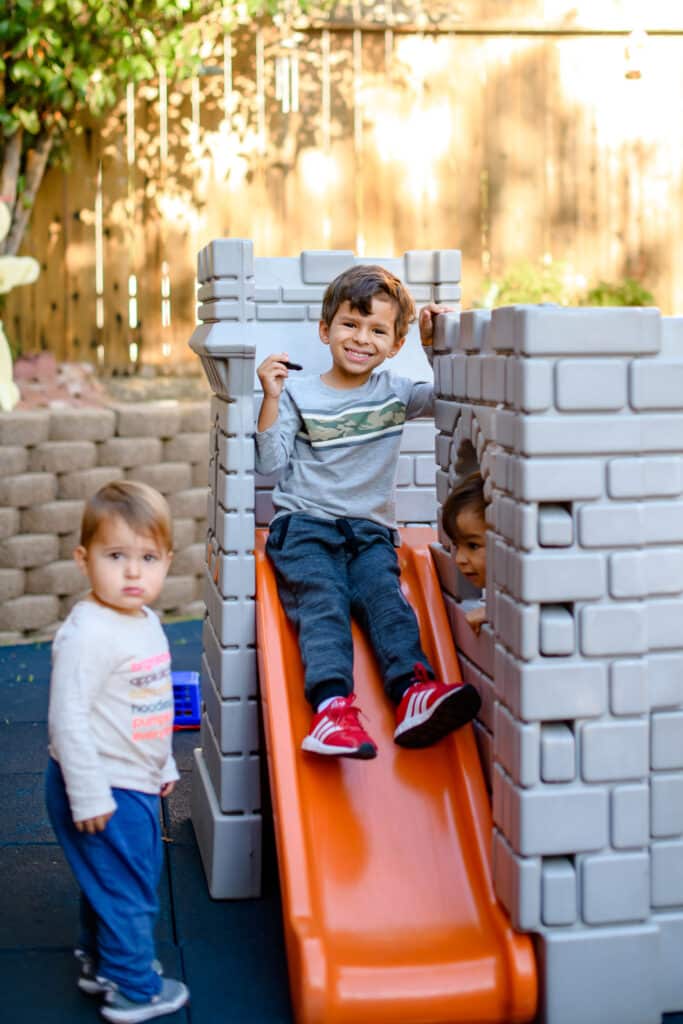When Home Grown launched nearly four years ago, our founding members – 10 philanthropic organizations – were galvanized into action by a single data point: 7 million children under the age of 5 were having their early childhood experiences in home-based child care. This was based on a national study with survey data from 2012. Beyond this study, there was little data about the circumstances, demographics and quality of home-based child care and the studies that did exist were nearly a decade old. When studies did focus on home-based care they overwhelmingly focused on the smallest share of that population: licensed or registered family child care (FCC) homes (including efforts by the federal government via OPRE to study initiatives supporting family child care), and not the millions of family, friend and neighbor caregivers who care for the largest portion of young children.
We are in a different place today; there are many new studies and data sources that inform our understanding of home-based child care. We are excited to see the current interest and investment in research in this area. While there have been dedicated researchers and proponents of inquiry in this area who have been active for many years, the recent uptick in research is welcomed, especially in light of the decade long decline of FCC care and the shifting understanding of the primacy of this care option during the pandemic.
Research published over the past several years is deepening our understanding of the state of the home-based child care sector and effects of policies on this sector, the circumstances of home-based providers, the demographics and motivations of families who use this care, and the needs of children, families and providers in this setting.
Here’s what the research is telling us:
Family, friend and neighbor (FFN) care remains the most prevalent form of non-parental child care in this country. Over 5 million FFN caregivers look after 11.5 million children including 6.8 million children ages 0-5 (NSECE 2019). While utilization of licensed or registered and listed family child care has dropped since 2012, the use of unlisted family, friend and neighbor care persisted at a similar rate. And use of family, friend and neighbor care increased at the outset of the pandemic (RAPID).
Family, friend and neighbor care is a first choice and preference for many families who recognize and value the unique strengths of this care option. While use of FFN care is widespread in all communities and across socio-demographic characteristics, FFN care meets the unique needs of families with diverse racial and cultural backgrounds, those located in rural communities, and those who work nontraditional hours.
- In California, researchers at the Center for the Study of Child Care Employment estimate that 26% of parents with children under age 3 rely on an FFN caregiver, along with 29% of parents with children ages 3 to 5. The greatest proportion of Black families use FFN care. Black and Latinx parents with infants and toddlers were more likely to agree that “cultural background” was very important in their selection decisions (CSCCE 2023).
- Research at the Migrant Policy Institute finds that FFN care is preferred by immigrant and Dual Language Learner families. FFN caregivers are far more likely to share a language and culture with the families of the children in their care, leading to an enhanced sense of trust and safety and offering a high-quality experience that is responsive to these families’ priorities and needs (Migrant Policy Institute 2021).
- In rural communities, children were as likely as urban children to be in some form of nonparental care. However they were more likely to be cared for by relatives and had lower rates of center care participation (Urban Institute 2018).
- About half of all children living with working parents whose family income is below the poverty level have parents who work nontraditional hours. Across most nontraditional-hour periods, a study by the Urban Institute finds, most parents across locations and racial/ethnic groups preferred care in the child’s home by a relative or friend as their first choice during early mornings, evenings, and overnight (Urban Institute 2022).
- Care during nontraditional hours is most commonly offered by FFN providers; 82% of unpaid FFN providers and 63% of paid FFN providers caring for children under age 6 offered some care during nonstandard hours (evenings, overnight, and/ or weekends), compared to just 8% of center-based providers (ACF 2016).
Many families rely on multiple child care options. A robust child care system that meets the needs of diverse parents will have multiple viable and well-supported options inclusive of school and center-based care as well as regulated and unregulated home-based child care that meets families needs as they shift over the life of their child, as they welcome more children to their family, or as their work and living circumstances change. Of families leveraging two or more forms of early care and education, one of the providers is almost always an FFN caregiver or nanny, including for 84% of children under age 3 and for 94% of children ages 3 to 5 (CSCCE 2023).
Registered, certified, listed and licensed family child care programs have been shuttering for over a decade and FFN caregivers have discontinued relationships with their states at alarming rates. This is caused, in part, by early childhood policies and has had negative consequences for families and providers. Early childhood education policies, namely the reauthorization of the Child Care Block Grant in 2014, have resulted in additional requirements and enhanced monitoring of providers and caregivers. A study in IL documents how these changes resulted in thousands of FFN caregivers leaving the child care system and no longer engaging in reimbursement and support programs (IL Action for Children 2022). Research from the Erikson Institute finds that among family child care providers who have left the system, 80% cite early learning systems including licensing, subsidy policy and quality ratings and improvement system requirements as a reason for discontinuing participation. Reduction of system-connected home-based providers has resulted in fewer child care options for families and emerging research suggests that this is resulting in less satisfaction among parents of the overall child care market.
Home-based child care providers are experiencing significant material hardship. Our partners at the Stanford Center for Early Childhood have collected monthly survey data from home-based providers over several years now in their RAPID program. These data reveal that the child care workforce, including family child care providers and especially family, friend and neighbor caregivers, are struggling to make ends meet. Overall, home-based child care providers are experiencing high rates of material hardship: Family child care providers report 33% are struggling with at least one hardship (struggling to afford food, housing, utilities) while 44% of FFN caregivers report hardship (RAPID 2021). Overall, one in three early childhood workers is going hungry including 26% of family child care providers and 34% of FFN caregivers (RAPID 2022). RAPID data show that 19% of the early childhood workforce hold student debt and 17% reported that they were carrying educational debt for others (RAPID 2022). Providers also struggle with housing costs; 26% of family child care providers and 37% of FFN caregivers report housing hardship with 38% of FFN caregivers and 28% of family child care providers saying they are somewhat or very worried about being evicted (RAPID 2023). Given that these providers operate their businesses or offer care from their homes, housing hardship creates stress on both the provider family but also their business or source of income.
At Home Grown, as we digest this data along with input directly from both family child care and FFN caregivers, we have two major takeaways:
Data that excludes FFN caregivers from analysis is not supporting effective policy making. Efforts to assess supply and demand do not include family, friend and neighbor care (unlisted) and therefore are not helpful for decision making. Child care desert analysis across the country maps the supply of regulated/licensed child care and estimated parent demand and excludes estimates of unlisted/unlicensed FFN care. Given the extent of reliance on and preference for FFN care, the child care desert analysis is not instructive to support policymakers and program leaders in designing programs and support for the sector.
All home-based child care providers need better support from the early childhood sector. Providers express the need for supportive policies that prioritize compensation, reduce burden, and recognize and reinforce the uniquely valuable aspects of this care via training and support. Home Grown documents providers’ strong desire to participate in decision-making at all levels of the child care system including administrative and legislative. Erikson research and interviews reveal the clear need for additional investment in the child care sector particularly focused on compensation.
Home Grown knows that in order to fuel narrative shifting campaigns and to inform effective programs and policy changes, we need data and insight to guide these conversations. We are thrilled to use the research cited here to tell a clearer story about home-based child care; however, there is much more we need to know and there is much action we need to take to build a more equitable and responsive child care system. We hope that providers and parents will continue to engage in research and share their experiences, that funders will join us in investing in research focused on home-based child care, that program designers will use this data to build more responsive program supports, and that advocates and policymakers will use this research to inform policy.




